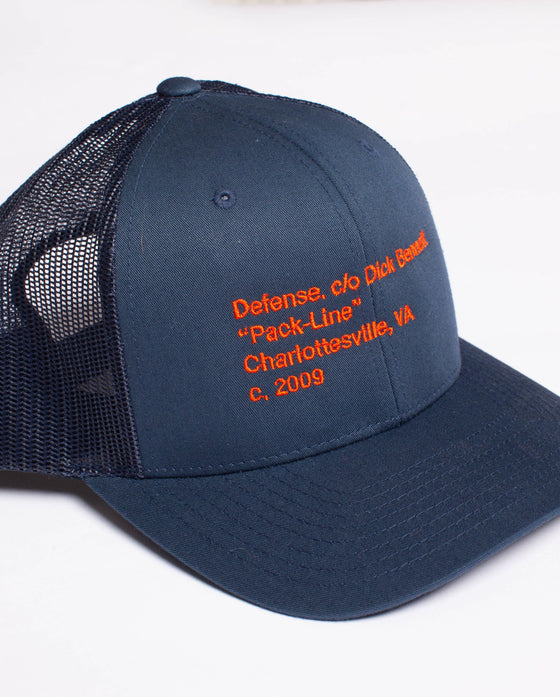The Offensive Scheme that Beat Texas Tech

With a week between the Maine and Purdue games, I decided to take a look back at the best day in UVA basketball history and what made it so.
I recently wrote on the primary offensive sets Virginia has used so far this season, but after the 16-minute TV timeout in the second half against Maine, the ‘Hoos came out in a Middle Triangle Offense they'd yet to use with this team. Virginia only used it on 3 possessions, and it only resulted in 3 points (an open 3 for Clark at the top of the key), but it was a blatant reach of Tony Bennett’s to recapture the offensive magic that won him a National Championship less than eight months ago.
Last season, Texas Tech boasted the best defense in the nation with an 84.1 defensive rating. Just 2 days before the matchup with Virginia, TTU held Michigan State and their #5 offense to a mere 51 points. But it wasn’t just the fact that Texas Tech had a great defense; it was how they played defense that presented the biggest challenge to the Cavaliers.
One of TTU’s defensive principles is to switch on the majority of all offensive screens. What this meant was that Virginia’s Mover Blocker and Continuity Ball Screen offenses wouldn’t create the same opportunities it does against teams that attempt to fight through picks instead of switching.
What allowed Texas Tech to play this way so well was their players’ defensive flexibility. Primarily playing a four-guard lineup, they were willing to switch 1-5 with the 6’10” Tariq Owens and 6’8” Norense Odiase agile and quick enough to switch onto smaller players. That, coupled with Virginia’s lack of a go to scorer on the inside that could dominate smaller guards, left the ‘Hoos to play isolation ball on the outside.

Enter Tony Bennett’s Middle Triangle Offense. Used sparingly throughout the season, more so as a situational play than a set offense, it would play a crucial role in beating Texas Tech. Bennett and the ‘Hoos relied on this scheme on 63.6% of their set offensive possessions to a tune of a 131-offensive rating (55 points on 42 possessions) against TTU.
The Middle Triangle Offense they ran relied on two ball handlers and shooters on the outside, usually Clark and Jerome, and then three players picking for each other on the inside, regularly Hunter, Guy, and one of Diakite, Key, or even rarely Salt.
Essentially, instead of allowing Texas Tech to dictate what they did on offense, the Middle Triangle Offense let Virginia decide who and where they attacked TTU’s vaunted defense. This allowed the big three of Guy, Jerome, and Hunter to get to their spots and go. Specifically, Jerome dribble driving down the weak side, Hunter driving in isolation from the top of the key, and Guy finding openings to get his jumper off yielded 29 points in the second half alone.
Diakite’s and Key’s role was to be a screener on the inside, both on the baseline for Guy, and around the free throw line to free Hunter up at the top of the key. Rarely did that player score, but Diakite did convert on a few jumpers in this set.
Clark was tasked with throwing the ball to the inside when Hunter or Guy found a favorable matchup. On a few occasions, he was also tasked with hitting a three as the defense collapsed on the opposite side where Hunter, Guy, or Jerome were attacking the rim. At certain points, Kihei also did a nice job of driving in to about 15 feet before moving the ball and putting the scorers in a more advantageous position.
Hunter had a career high 27 points in this game. Perhaps the biggest part of that performance was the opportunities he got from the triangle offense. He’s most dangerous in the middle of the half-court offense, when he can drive to his left or right, or pull up for a jumper. In fact, he scored 15 points as a result of this scheme, all in the second half.
Guy also was a major benefactor of the triangle, as he scored 20 of his 24 points out of that set. Holding true to their principles, Texas Tech would switch on off ball screens, but in the middle triangle offense Guy would catch the ball in a favorable enough position where he could jab step at somebody like Tariq Owens, and then nail a pull up or step back jumper in the bigger man’s face.
Jerome’s primary role in this offense was attacking the back side, which would be consistently left without help due to the complex screening on the inside. In this set he would score 12 of his 16 points. His dribble drives would also freeze defenders on the inside, meaning that when Hunter or Guy picked and popped, they’d be wide open from three for Jerome to feed them.
What’s even more enlightening is that, in the first four minutes of the game, the Triangle offense wasn’t used. Instead, they ran the Mover Blocker four times and the Continuity Ball Screen set twice. Remember that dull 3-2 score after four minutes of play? That was a direct result of the ineffectiveness of those sets against Texas Tech’s defensive style of play. After that? Bennett employed the Triangle Offense on 38 of the next 42 possessions in the following 28 minutes when the Cavs scored 53 points.
Where did the Triangle Offense go late in the 2nd half and overtime? While it was the set that yielded Hunter’s decisive three to put Virginia up 75-73 with 2:08 remaining, Bennett relied on Ty Jerome and the 4-out, top of the key ball screen offense to close the game. Why? While the Middle Triangle Offense was ridiculously effective for the ‘Hoos, it is time consuming and relies on a number of things to go right, which can be risky late in games.
Nonetheless, that willingness from Bennett and his staff to rely on a scheme they’d rarely gone to before, in the biggest game of their respective careers, is astounding. It displays not only their confidence in their own basketball IQ, but also their confidence in the players to run a relatively foreign offense and go win themselves a championship.
You love to see the in-game adjustments work so well for that team, and perhaps that can tell us all something about the 2019-2020 ‘Hoos.
This team has struggled mightily on the offensive end, still yet to score more than 61 points in a game and producing a lackluster 103.9 points per 100 possessions. The Triangle Offense likely isn't the answer for this team, as they lack some of that scoring punch last year's team did, they'll need to rely more ball screens and the Mover Blocker to get them a step on the defense. While we can’t expect any massive improvements from individual players, only slight increases in shooting efficiency, we can expect that Bennett will find the right scheme for this team in the appropriate situations.
And going forward? Looking past this season? The development of Bennett’s and Virginia’s offensive repertoire is a scary, scary prospect for the rest of college basketball.
Thanks for reading! If you get the chance, check out the Brogdon Fan Page on Instagram (@brogdonfanpage) and follow me on Twitter (@zachcarey11) for more coverage on Brogdon and other Hoos in the NBA!
Check out Episode 2 of The Locker Room Access podcast with Mark Jerome featuring the Guy family, Kirk Penney, Justin Maxey, Matt Palumbo, and Jared Czech!
Latest Product Release:



